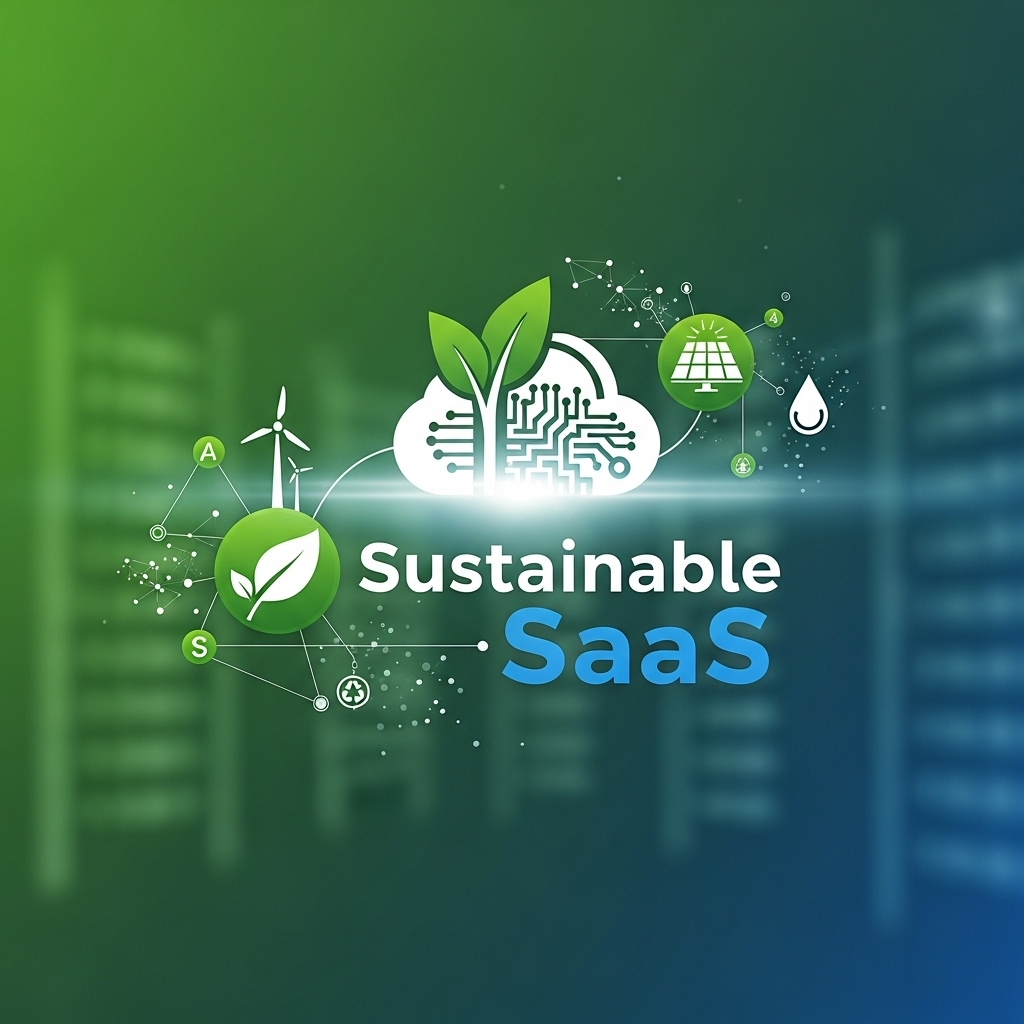In today’s competitive market, sustainability isn’t just a buzzword—it’s a business imperative. US companies are increasingly evaluating SaaS providers based on their environmental credentials, with 78% of consumers willing to pay more for sustainable products according to recent market research. The SaaS industry, which has become the backbone of digital transformation, is now at a crossroads where innovation must align with environmental responsibility. As data centers consume approximately 1-3% of global electricity, the need for eco-friendly software solutions has never been more urgent. Forward-thinking SaaS companies are discovering that sustainability isn’t just good for the planet—it’s a powerful differentiator that drives customer loyalty and operational efficiency.
The shift toward green SaaS represents a fundamental evolution in how businesses approach technology. Companies that once viewed sustainability as a compliance issue now recognize it as a strategic advantage. With regulations like California’s Climate Corporate Data Accountability Act pushing for greater transparency, SaaS providers must prioritize environmental metrics alongside traditional business KPIs. This article explores actionable strategies for implementing sustainable practices without compromising performance or profitability, drawing on proven case studies from industry leaders who’ve successfully integrated eco-conscious principles into their core operations.

What Exactly Is Sustainable SaaS?
Sustainable SaaS refers to Software as a Service platforms designed and operated with minimal environmental impact throughout their entire lifecycle. This encompasses everything from energy-efficient coding practices to carbon-neutral data center operations. Unlike traditional software, sustainable SaaS considers the environmental cost of each user interaction, server request, and data transfer. It’s not just about using renewable energy for servers—it’s a holistic approach that examines the entire value chain, from development to disposal.
The concept has evolved beyond basic energy efficiency to encompass carbon-aware computing, resource optimization, and circular economy principles. As Asim Hussain, chairperson of the Green Software Foundation, explains: “There’s an already existing large segment of the software-development ecosystem that cares about this space—they just haven’t known what to do.” The shift represents a fundamental change in how we approach software engineering, moving from “does it work?” to “how sustainably does it work?”
Sustainable SaaS implementation requires a comprehensive strategy that includes:
- Energy-efficient algorithms and code optimization
- Carbon-aware infrastructure deployment
- Minimal data retention policies
- Sustainable supply chain management
The business case is compelling: companies that embrace sustainable practices often see 15-30% reductions in operational costs while simultaneously improving brand reputation and customer loyalty. This dual benefit makes sustainability not just an ethical choice but a strategic business decision.
The Environmental Impact of Traditional SaaS Platforms
The invisible environmental cost of SaaS is staggering. Data centers, the unseen giants behind our internet experiences, consume massive amounts of electricity and generate significant carbon emissions. Each time a user accesses a SaaS platform, multiple server requests travel through complex networks, each consuming energy and generating heat that requires cooling. According to winsavvy.com, “while they make life easier, there is also an invisible cost — energy use and carbon emissions.”
The environmental footprint extends beyond just energy consumption. Traditional SaaS platforms often operate with significant inefficiencies:
- Over-provisioned servers running at 15-30% capacity
- Data redundancy creating unnecessary storage demands
- Inefficient algorithms processing more data than necessary
- Lack of optimization for renewable energy availability
This inefficiency has real-world consequences. The global information and communications technology sector currently accounts for approximately 2-3% of global greenhouse gas emissions—comparable to the aviation industry. For SaaS companies targeting the US market, where consumers increasingly demand environmental accountability, this presents both a challenge and an opportunity to differentiate through sustainable innovation.
The Three Pillars of Green Software Development
The foundation of sustainable SaaS rests on three critical pillars that guide eco-friendly software development. According to the Green Software Foundation, these pillars provide a comprehensive framework for reducing environmental impact while maintaining performance and user experience.
Energy Efficiency
Energy efficiency focuses on minimizing the power consumption of software applications. This involves optimizing code to reduce processing time, implementing efficient data structures, and eliminating unnecessary computations. Simple changes like reducing image sizes, compressing data, and implementing lazy loading can significantly decrease energy requirements. The most effective energy-efficient SaaS platforms use algorithms that dynamically adjust resource consumption based on current demand patterns.
Hardware Efficiency
Hardware efficiency aims to maximize the utilization of physical resources while minimizing waste. This includes optimizing server utilization rates, implementing serverless architectures where appropriate, and designing for hardware longevity. Many sustainable SaaS companies now prioritize cloud providers with high server utilization rates (above 60%) and transparent sustainability reporting. As noted by ecodrive.community, “not all cloud services are created equal in terms of energy efficiency.”
Carbon-Aware Computing
Carbon-aware computing represents the most advanced pillar, where software actively responds to the carbon intensity of the electricity grid. This approach schedules non-urgent computations during periods when renewable energy is abundant, typically when solar and wind generation is high. Advanced SaaS platforms implement carbon-aware features that can reduce emissions by 10-40% without impacting user experience.
| Pillar | Implementation Strategy | Potential Emission Reduction |
|---|---|---|
| Energy Efficiency | Code optimization, lazy loading, compression | 15-25% |
| Hardware Efficiency | Server consolidation, right-sizing, hardware lifecycle management | 20-35% |
| Carbon-Aware Computing | Grid-responsive scheduling, renewable energy matching | 10-40% |
The most successful sustainable SaaS platforms integrate all three pillars into their development lifecycle, creating a compounding effect on environmental benefits while maintaining or even improving performance metrics.
Cost-Effective Strategies for Sustainable SaaS Implementation
The good news is that sustainability doesn’t have to break the bank. Many eco-friendly practices actually reduce operational costs while improving environmental performance. As highlighted by saasfirst.com, “going green can actually save you some cash” through various budget-friendly strategies that deliver both environmental and financial benefits.
Energy-Efficient Infrastructure
Transitioning to energy-efficient servers can reduce power consumption by up to 40% while often providing better performance. Many SaaS companies are also embracing right-sizing—matching server capacity precisely to actual usage patterns rather than over-provisioning. This approach not only reduces energy consumption but also lowers cloud service costs. The move toward containerization and microservices architecture further enhances resource utilization by allowing more efficient scaling.
Sustainable Data Management
Effective data management represents another significant opportunity. By implementing data lifecycle policies that automatically archive or delete unnecessary information, SaaS providers can dramatically reduce storage requirements. The hydrolix.io approach of “monitor[ing] CDN performance and transaction logs from each of your services to determine if they are providing enough value for both your sustainability efforts and your bottom line” demonstrates how data analytics can drive both environmental and financial gains.
Remote Work and Digital Efficiency
The shift to remote work creates unexpected sustainability benefits. By enabling employees to work from home, SaaS companies reduce office energy consumption and transportation emissions. Additionally, implementing digital meeting solutions with energy-efficient video compression and AI-driven bandwidth optimization can further reduce the carbon footprint of virtual collaboration.
Measuring and Reporting Your SaaS Sustainability
Quantifying sustainability efforts is crucial for both internal improvement and external communication. Without proper metrics, it’s impossible to track progress or validate claims. The most effective SaaS companies implement comprehensive sustainability dashboards that monitor key environmental indicators alongside traditional business metrics.
Key Performance Indicators to Track
- Energy consumption per user session
- Carbon emissions per transaction
- Server utilization rates
- Renewable energy percentage
- Data efficiency ratio
Implementing monitoring tools that track these metrics in real-time allows SaaS providers to identify inefficiencies and measure the impact of sustainability initiatives. As noted in the hydrolix.io article, “you can monitor CDN performance and transaction logs from each of your services to determine if they are providing enough value for both your sustainability efforts and your bottom line.”
Transparency and Reporting Frameworks
The most trusted SaaS providers publish regular sustainability reports using established frameworks like the Global Reporting Initiative (GRI) or Sustainability Accounting Standards Board (SASB). These reports should include:
- Baseline environmental metrics
- Reduction targets with specific timelines
- Progress against previous goals
- Third-party verification of results
Transparent reporting not only builds customer trust but also helps identify new opportunities for improvement. For US companies, aligning with frameworks like the SEC’s climate disclosure rules ensures regulatory compliance while demonstrating genuine commitment to sustainability.
Ad Pro Tip: Implement Carbon-Aware Scheduling Now
Pro Tip: Start implementing carbon-aware scheduling immediately by integrating with services like WattTime or Electricity Maps. These platforms provide real-time data on grid carbon intensity, allowing your SaaS platform to automatically shift non-urgent computations (like data backups, analytics processing, and system updates) to times when renewable energy is most abundant. Even basic implementation can reduce your carbon footprint by 15-25% with minimal development effort—making this one of the most accessible sustainability upgrades for existing SaaS platforms.
This approach requires minimal infrastructure changes but delivers significant environmental benefits. By scheduling batch processing jobs during periods of high renewable energy availability, you can substantially reduce your carbon emissions without compromising performance. The best part? Many cloud providers now offer built-in tools to facilitate this transition, making implementation easier than ever.
The Future of Sustainable SaaS in the US Market
The trajectory of sustainable SaaS points toward increasingly sophisticated integration of environmental considerations into core business operations. As consumer demand grows and regulations tighten, sustainability will become a non-negotiable requirement rather than a differentiator. In the coming years, we’ll likely see:
- Sustainability ratings becoming as important as security certifications for SaaS selection
- Carbon pricing being incorporated directly into SaaS billing models
- Automated sustainability optimization becoming a standard feature in development platforms
- Industry-wide sustainability benchmarks replacing vague marketing claims
The most forward-looking SaaS companies are already positioning themselves as environmental leaders. By embedding sustainability into their core value proposition, they’re not only reducing environmental impact but also building stronger customer relationships and future-proofing their businesses against increasingly stringent regulations.
Conclusion: The Business Case for Sustainable SaaS
Sustainable SaaS represents more than just environmental responsibility—it’s a strategic business decision with tangible benefits. As the ecodrive.community article notes, “by embracing green software, companies can reduce their carbon footprint, save energy, and contribute to a healthier planet.” The evidence is clear: sustainable practices improve operational efficiency, reduce costs, enhance brand reputation, and align with growing customer expectations.
For US SaaS providers, the time to act is now. By implementing the strategies outlined in this article—from optimizing code efficiency to adopting carbon-aware computing—you can position your platform as an environmental leader while simultaneously improving your bottom line. The sustainable SaaS revolution isn’t coming—it’s already here, and companies that adapt will thrive in the increasingly eco-conscious US market.
The journey toward sustainable SaaS requires commitment, but the rewards—both environmental and business—are substantial. Start small with one or two initiatives, measure your progress, and build momentum. Your customers, your investors, and the planet will thank you for it.
